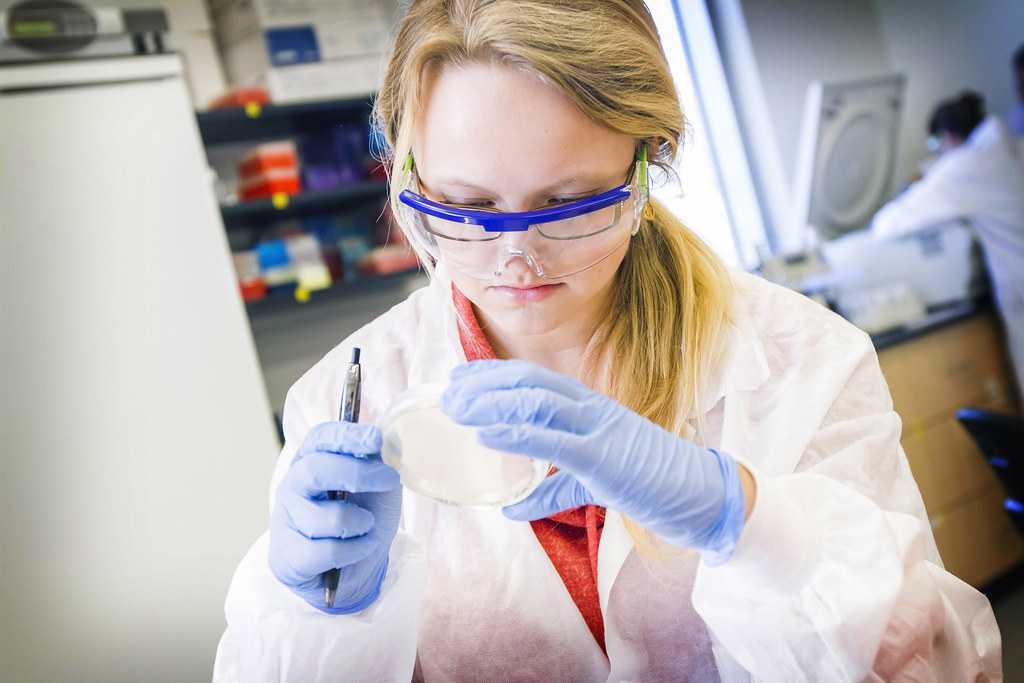BIOTECHNOLOGICAL APPLICATIONS IN MEDICINE
Recombinant DNA Technology in Healthcare:
- Mass Production: Enables large-scale production of therapeutic drugs.
- Safety and Efficacy: Recombinant therapeutics are safer and more effective.
- Immunological Responses: Minimizes unwanted immune reactions common in non-human sourced products.
Approved Recombinant Therapeutics:
- Global Impact: Approximately 30 recombinant therapeutics approved for human use worldwide.
- Indian Market: India has 12 approved and marketed recombinant therapeutics.
Advantages:
- Precision Medicine: Tailored therapies based on individual genetic profiles.
- Reduced Side Effects: Targeted treatments with minimal adverse effects.
- Personalized Healthcare: Customized approaches for patient-specific conditions.
Examples of Recombinant Therapeutics:
- Insulin: Recombinant insulin for diabetes treatment.
- Growth Hormones: Synthetic growth hormones for growth disorders.
- Blood Clotting Factors: Recombinant factors for hemophilia treatment.
- Monoclonal Antibodies: Targeted antibodies for cancer therapy.
Future Directions:
- Gene Therapy: Correcting genetic disorders at the molecular level.
- Vaccine Development: Recombinant technology for vaccine production.
- Advanced Drug Delivery: Precision delivery systems for enhanced treatment outcomes.
Genetically Engineered Insulin
Challenges in Diabetes Management:
- Insulin Dependence: Diabetic patients require regular insulin intake.
- Limited Supply: Human insulin availability may be insufficient.
Traditional Sources of Insulin:
- Animal-Derived: Extracted from pancreas of cattle and pigs.
- Limitations: Allergic reactions due to foreign protein content.
Revolution with Genetic Engineering:
- Bacterial Production: Use of bacteria for large-scale insulin synthesis.
- Simplified Process: Easy growth of bacteria for abundant insulin production.
Insulin Structure and Challenges:
- Polypeptide Chains: Insulin composed of A and B chains linked by disulphide bridges.
- Pro-hormone Synthesis: Insulin synthesized as a pro-hormone with an additional C peptide.
- Maturation Process: C peptide removed during insulin maturation.
rDNA Techniques for Insulin Production:
- Eli Lilly’s Breakthrough (1983):
- DNA Sequences: Prepared DNA sequences for A and B chains of human insulin.
- Plasmid Introduction: Introduced sequences into E. coli plasmids.
- Separate Production: A and B chains produced separately.
- Combination Process: Extracted chains combined, creating disulfide bonds.
- Result: Successful production of mature human insulin.
- Eli Lilly’s Breakthrough (1983):
Advantages of rDNA Insulin:
- Reduced Allergic Reactions: Minimized immune responses compared to animal-derived insulin.
- Sustainable Production: Large-scale and consistent insulin supply.
- Precision Medicine: Closer match to natural human insulin.
Oral Administration Challenges:
- Protein Breakdown: Insulin digestion in the digestive tract.
- Effective Delivery Methods: Current focus on injections for direct bloodstream access.
Gene Therapy: Correcting Hereditary Diseases
Objective of Gene Therapy:
- Hereditary Disease Correction: Correcting gene defects diagnosed in individuals, including embryos.
- Inserting Functional Genes: Introducing normal genes to compensate for non-functional ones.
Genesis of Gene Therapy:
- First Clinical Application (1990):
- Patient: 4-year old girl with adenosine deaminase (ADA) deficiency.
- Importance of ADA: Essential for immune system function.
- Genetic Cause: Deletion of the ADA gene.
- First Clinical Application (1990):
Traditional Treatments and Limitations:
- Bone Marrow Transplant: Partial cure for ADA deficiency.
- Enzyme Replacement Therapy: Injection of functional ADA, not completely curative.
First Steps in Gene Therapy for ADA Deficiency:
- Lymphocyte Culture Growth:
- Patient’s Blood Lymphocytes: Grown outside the body in culture.
- Retroviral Vector: Introduction of functional ADA cDNA using a retroviral vector.
- Returned to Patient: Modified lymphocytes returned to the patient.
- Lymphocyte Culture Growth:
Challenges and Continuous Treatment:
- Cell Mortality: Genetically engineered lymphocytes not immortal.
- Periodic Infusion: Patients require periodic infusion of modified lymphocytes.
- Need for Permanency: Aim for a permanent cure with early embryonic gene introduction.
Long-Term Solution: Permanent Cure:
- Early Embryonic Gene Insertion: Introducing ADA gene isolate into cells at embryonic stages.
- Potential for Permanency: Aiming for a lasting cure without the need for periodic interventions.
Molecular Diagnosis
Significance of Early Diagnosis:
- Effective Treatment: Early detection crucial for effective disease treatment.
- Pathophysiology Understanding: Essential for understanding disease progression.
Challenges with Conventional Methods:
- Limited Early Detection: Conventional methods (serum, urine analysis) insufficient for early detection.
Revolutionary Techniques for Early Diagnosis:
- Recombinant DNA Technology: Fundamental in enabling early diagnosis.
- Polymerase Chain Reaction (PCR):
- Amplification Technique: Detects low concentrations of pathogens (bacteria, viruses) before visible symptoms.
- HIV Detection: Routinely used for early HIV detection in suspected AIDS patients.
- Cancer Mutations: Applied in detecting gene mutations in suspected cancer patients.
Principle of PCR for Low DNA Amounts:
- Amplification Process: PCR amplifies nucleic acids, enabling detection of low DNA amounts.
- Early Detection: Identifies pathogens at low concentrations before visible symptoms.
Mutation Detection using DNA Hybridization:
- Radioactively Tagged Probes: Single-stranded DNA or RNA probes tagged with radioactivity.
- Hybridization with Complementary DNA: Probes hybridize with complementary DNA in a cell clone.
- Mutated Gene Detection: Lack of complementarity with mutated genes results in non-appearance on autoradiography.
ELISA: Antigen-Antibody Interaction Principle:
- Antigen-Antibody Binding: Based on interaction between antigens (proteins, glycoproteins) and antibodies.
- Pathogen Infection Detection:
- Antigen Presence: Detection of antigens indicates pathogen presence.
- Antibody Detection: Identifies antibodies synthesized against the pathogen.



